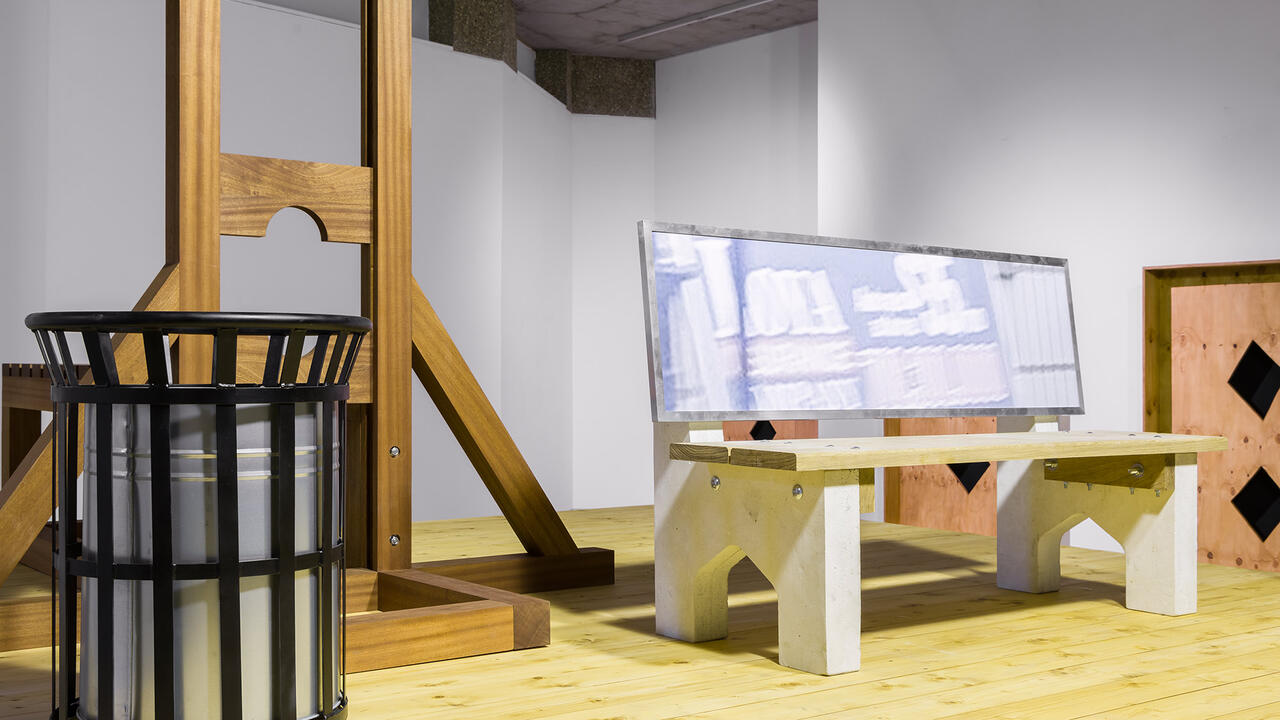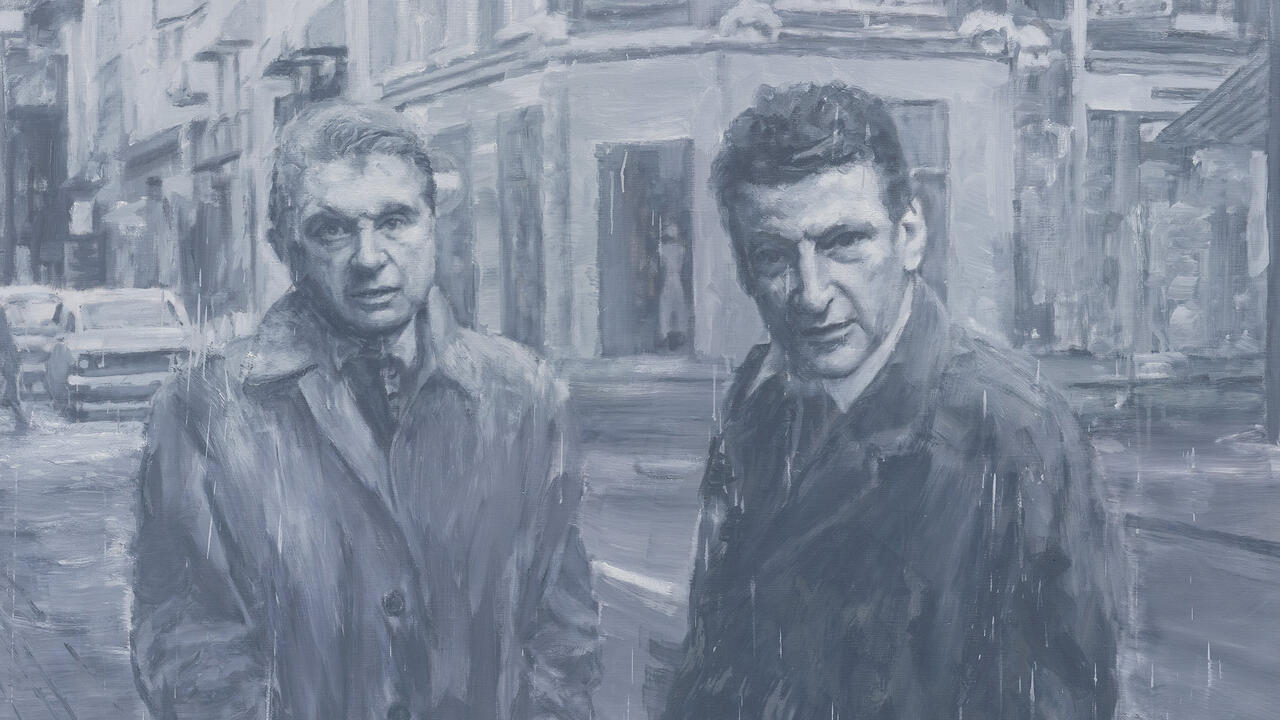One of the World’s Largest Arms Fairs Has Arrived in London – and Artists Are Fighting Back
Activists aim to whip up protest as weapons buyers flock to the Defence and Security Equipment International trade show
Activists aim to whip up protest as weapons buyers flock to the Defence and Security Equipment International trade show

From 10 to 13 September, London’s ExCel Centre will host one of the world’s largest arms trade shows, Defence and Security Equipment International (DSEI). A one-stop shop for guns, tanks, grenades and fighter jets, DSEI will bring together more than 1,600 international exhibitors and military delegations – from Hong Kong to Saudi Arabia – for a weekend of sales negotiations and networking. To set the scene, picture yourself at an art fair but imagine you are met with weapons and warmongers rather than a tired Jeff Koons sculpture.
In response to DSEI, various forms of resistance are springing up across the city, including Art The Arms Fair (ATAF) – a volunteer-led protest and biannual art exhibition, designed specifically to increase public awareness and whip up dissent. Taking place from 3 to 13 September across three of Maverick Projects’ spaces in south London, ATAF’s roster includes events, participatory art-making workshops and exhibitions with pieces donated by over 70 artists. The show is diverse, with works by internationally recognized names, such as Anish Kapoor and Hito Steyerl, displayed alongside emerging artists and community-based projects. An auction will take place on 13 September, with the generated funds going to Campaign Against Arms Trade (CAAT) as well as various other charities and human-rights organizations.

Faced with the monolithic defence industry, however, what can creative action really achieve? ‘Art doesn’t change the world on its own, but it does if allied with activism and protest […] It’s a visual arm of that. And that visual arm is important,’ participating artist Peter Kennard told me. Think of the CND symbol, Pablo Picasso’s anti-war painting Guernica (1937) or Extinction Rebellion’s hallowed logo. Kennard, who has been making confrontational political work since the 1970s, has taken over the entire space at AMP Gallery as part of ATAF. Initially conceived as a response to the conflict in Iraq, the work on view, Medals DISarm Fair (2003–17), comprises a series of 12 imposing photomontages on canvas, which lean against the gallery walls like hefty tombstones. Ribbons of decorative war medals morph into unravelling flags. Beneath, where the medallions should hang, are bloodied faces, soldier’s helmets, rubble. In the artist’s recent book, Peter Kennard: Visual Dissent (Pluto, 2019), he writes: ‘I’ve been accused of making images that are “bleeding obvious” […] In fact, one of my main goals is to make images that do make the bleeding that comes from our wars and profiteering obvious.’

There are massive figures at stake in the defence industry – around US$100 billion worth of arms are sold every year. And, despite strict regulations and government endorsement, leading experts such as Andrew Feinstein, in his book The Shadow World (2011), have accused the industry of existing within a grey area of legality and of accounting for 40 percent of corruption within all global trade. Jill Gibbon, a political artist whose practice has focused on infiltrating arms trade shows to make drawings of what unfolds, told me that fairs such as DSEI are shrouded by a ‘performance of respectability’. ‘I have seen a string quartet playing Bach and Handel on the back of a military truck at DSEI, while waiting staff hand out champagne, beer and pretzels; or glamour models signing calendars in which they pose with rifles between their legs.’ At ATAF’s main space in Peckham, Safehouses 1 & 2, Gibbon’s drawings are on view, alongside a freebie she collected from a previous iteration of DSEI. In a glass vitrine sits a boiled sweet in a black wrapper, on which are printed the words: ‘WELCOME TO HELL’. The slogan seems unusual for an industry that tends to deploy euphemisms to obfuscate atrocities: there’s no attempt at subterfuge here.

Besides visibility, a crucial function of ATAF is the generation of funds for causes opposing the arms trade. In 2017, GB£210,000 was raised – the vast proportion of which came from the sale of Banksy’s donated piece, Civilian Drone Strike (2017). It’s hard to measure the direct effect of ATAF’s financial contributions, but this summer saw CAAT achieve a monumental goal. After a four-year campaign, the court of appeal finally ruled that it was unlawful for Britain to continue selling arms to Saudi Arabia due to overwhelming evidence of their breaching International Humanitarian Law in Yemen. This begs the question: why are Saudi Arabia still on DSEI’s invite list?
Rhianna Louise, an organizer of ATAF, expressed to me how significant the participation of artists such as Banksy, Kapoor and Steyerl is: ‘They have an appeal and a reach beyond the activists and the campaigners.’ Their support yields a twofold effect: not only does it have the power to drive the topic into mainstream media, it also raises awareness within the art world itself, adding to the momentum of conversations around artwashing.

As we have witnessed over the past year, artists can wield immense influence when they speak out against dodgy private funding and nefarious companies. Nan Goldin successfully pressurized London’s National Portrait Gallery to sever financial ties with the Sackler Family, whose company, Purdue Pharma, manufactures the highly addictive opioid OxyContin. Eight artists pulled their work from this year’s Whitney Biennial following revelations that the then vice-chair, Warren B. Kanders, owns Safariland – a company selling tear gas used against migrants on the US-Mexico border. Kanders resigned shortly after.
When I ask Kennard if ATAF, and protest more broadly, has the potential to affect real change, he leaves me with Gramsci’s well-known aphorism, taken from a letter the Marxist wrote while in prison in 1929: ‘Pessimism of the intellect, optimism of the will.’ And then added one from Samuel Beckett’s Worstward Ho! (1983): ‘Try Again. Fail Again. Fail Better.’
Main image: DSEI event at the ExCel centre on 12 September 2017 in London, UK. Courtesy: Getty Images; photograph: Leon Neal






















